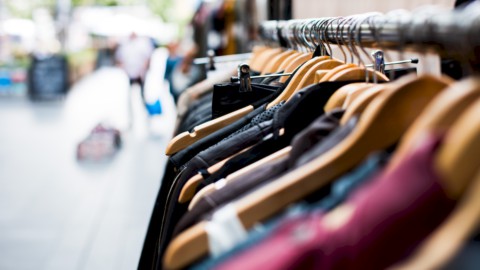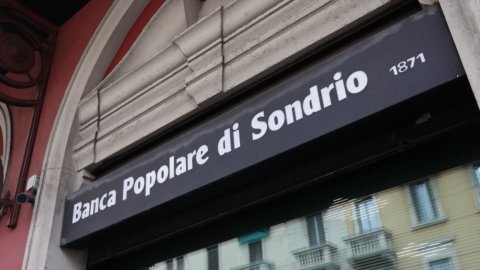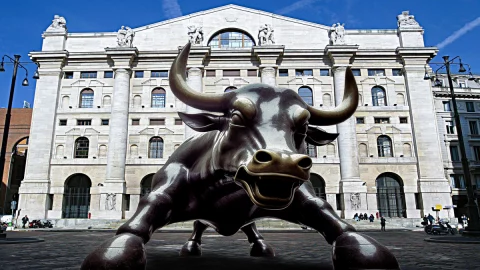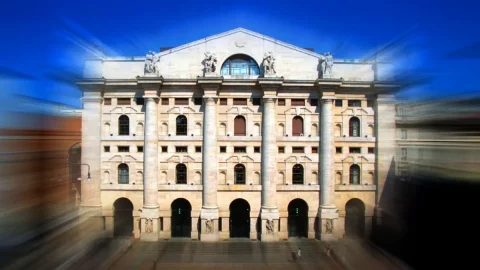Closes today Milanese event of fashion dedicated to men, after the one in Florence last week: the first key fashion shows of the year in Europe given that the one in London was canceled due to Covid.
There was only one key question among models and buyers: how will it be this year for the luxury and fashion sector, in Italy in particular?
- international observers interviewed by Firstonline see - despite many pitfalls - a good recovery in 2022 especially in the USA, a more tepid trend in Europe and consequently also in Italy, which still remains an international flagship.
“The sector of Italian fashion will close the year 2021 with a total turnover of around 90 billion euros. In 2019 there were 100 billion and in 2020 there were 75,” he says Armando Branchini, Strategic Advisors, EY Fashion, Luxury and Retail Practice. “So overall the industry has grown quite a lot, especially in the last 6 months.”
Globally, the recent report by Bad (Business of fashion) e McKinsey he sees “a recovery of the fashion industry for 2022, with sales that will exceed the levels recorded in 3 by 8-2019%, more marked in China and the United States, and slower in Europe”.
If you look specifically at the High-end fashion in Italy -which represents about a third of the total of Italian Fashion- we can see a growth in 2021 of almost 30% compared to 2020, managing to reach the level of total turnover of 2019" he continues Brandini. “No country in the world has as many high-end fashion brands as Italy”.
“Globally we are faced with and sort of post-war euphoria, an impulse to enjoy life after the months in the heat of the pandemic, he says Luke Solca, senior research analyst global luxury goods of Bernstein. “2021 closed very positively with consumers from all over the world who returned to spending significantly on fashion and luxury and high-end products even more than in 2019, in some cases even double. Even in Europe, despite the absence of tourists, sales are at 70% of what they were in 2019". The question mark could be the presence of the Chinese buyer, “but I saw many buyers in Shanghai, Beijing, Shedun: I expect a very positive trend, with the high-end sector growing by 11-12%, reaching peaks of +18-19% for the big players” foresees Solca.
Optimism is also underlined by the "Global Luxury Brands Survey Report" study carried out by the consultancy and brokerage company Willis Towers Watson based on 100 interviews decision maker: “The brands in the luxury sector say they are optimistic, emphasizing that online sales they may have reached a tipping point.”
However, the same applies to all risks which are weighing on international markets from those linked to the spread of the pandemic with the consequent lockdowns to those of the supply chain.
Its pressures on the supply chain have been identified by managers interviewed in the Bof-Mckinsey report as “the main challenge that could jeopardize the pace of this recovery” and this could mean “a negative impact on margins in 2022 and an increase in retail prices by an average of 3% up to peaks of 10%”.
“After nearly two years of turmoil, the global fashion industry is poised to bounce back. However, companies will face major supply chain challenges as pressure from higher costs and logistical bottlenecks will impact the consumer in the form of higher prices and delayed supplies,” he says. Imran Amed, founder and CEO of The Business of Fashion. “Companies will therefore have to review their supply chain models to make them as flexible and resilient as possible”.
These indications - certainly valid for everyone - become imperative for Italian companies which will have to demonstrate a strong and innovative temper.
According to the eighth edition of the Global Powers of Luxury Goods, the annual study by Deloitte, which examines and ranks the 100 Top Players of the Fashion & Luxury sector globally, Italy emerges as the first luxury country in the world, with as many as 26 companies in the top 10 (but only one in the Top 8), followed by France, which places only 100 in the top 4 (although XNUMX in the top XNUMX).
“In Italy there is a strong polarization which benefits companies that operate in value competition, with well-known brands and strong capacity for innovation and are generally of significant size” Brandini continues. “On the other hand, smaller companies, which operate mainly in price competition, which are not distinguished by well-known brands and which follow the leaders in terms of product and process innovation, are less dynamic”. In the months to come, “some entrepreneurs and family businesses must review traditional approaches and first of all innovate the corporate culture. And decide to be listed on the Stock Exchange or pass the hand” concludes Brandini.
Ermenengildo Zegna it was listed on the New York Stock Exchange last December through a merger with the American spac of Investindustrial.

“The little ones, when they compete against the giants, have to invent something new” says Sonca referring to the Italian market. Well he did Moncler for example that he has invented a new way of presenting the collections, he has cut with the old format, with fashion shows, and through the «Genius event» he has been able to create enormous interest around the new collection” he continues sonca adding that instead “Tod's and Ferragamo they need to modernize the brand by focusing on the theme of informality and therefore exiting the now more difficult formal sector. And also the same Armani he needs to broaden his perspectives.”
For some time there have been rumors of some alliances even if Re Giorno recently declined Exor's proposal.
In recent years in the risk of luxury brands there have been many a cross the Italian border.
The last was Etro, purchased by L Catterton, the largest global private equity firm linked to LVMH. French luxury giant Kering has been making big purchases in Italy putting in its wallet Gucci, Bottega Veneta, Pomellato, Dodo, Brioni e Richard Ginori.
Since 2012 Valentino moved to Mayhoola Investments e Versace was sold to the American company Capri Holdings Ltd of Michael Kors.
The other powerful French luxury pole, Lvmh of Bernard Arnault, bought it in a few months Loro Piana, Fendi, Emilio Pucci, Acqua di Parma, and Bulgari.
Even China has come to shop for brands in Italy, taking them home Krizia, Mila Schön, Sergio Tacchini, Ferrè, Sergio Rossi, La Rinascente.
Finally, Buccellati was bought by Richemont, while The Pearl, it passed to the Dutch of Sapinda.
Others remain convinced Italians.
Prada, which boasts brands such as Miu Miu, Car Shoe, Church's and Marchesi 1824 in its portfolio, is listed in Hong Kong, headed by Patrizio Bertelli and the family of Miuccia Prada, with her son Lorenzo.
Tod’s even after LVMH increased its stake from 3,2% to 10% in recent months.
And then Max Mara, Diesel, Dolce&Gabbana, Aeffe, Moncler and Brunello Cucinelli, but also Diesel, with the patron Renzo Rosso, owner of the Otb group, which in the last decade has bought up brands such as Marni, Maison Margiela, Viktor & Rolf and recently Jil Sander.





